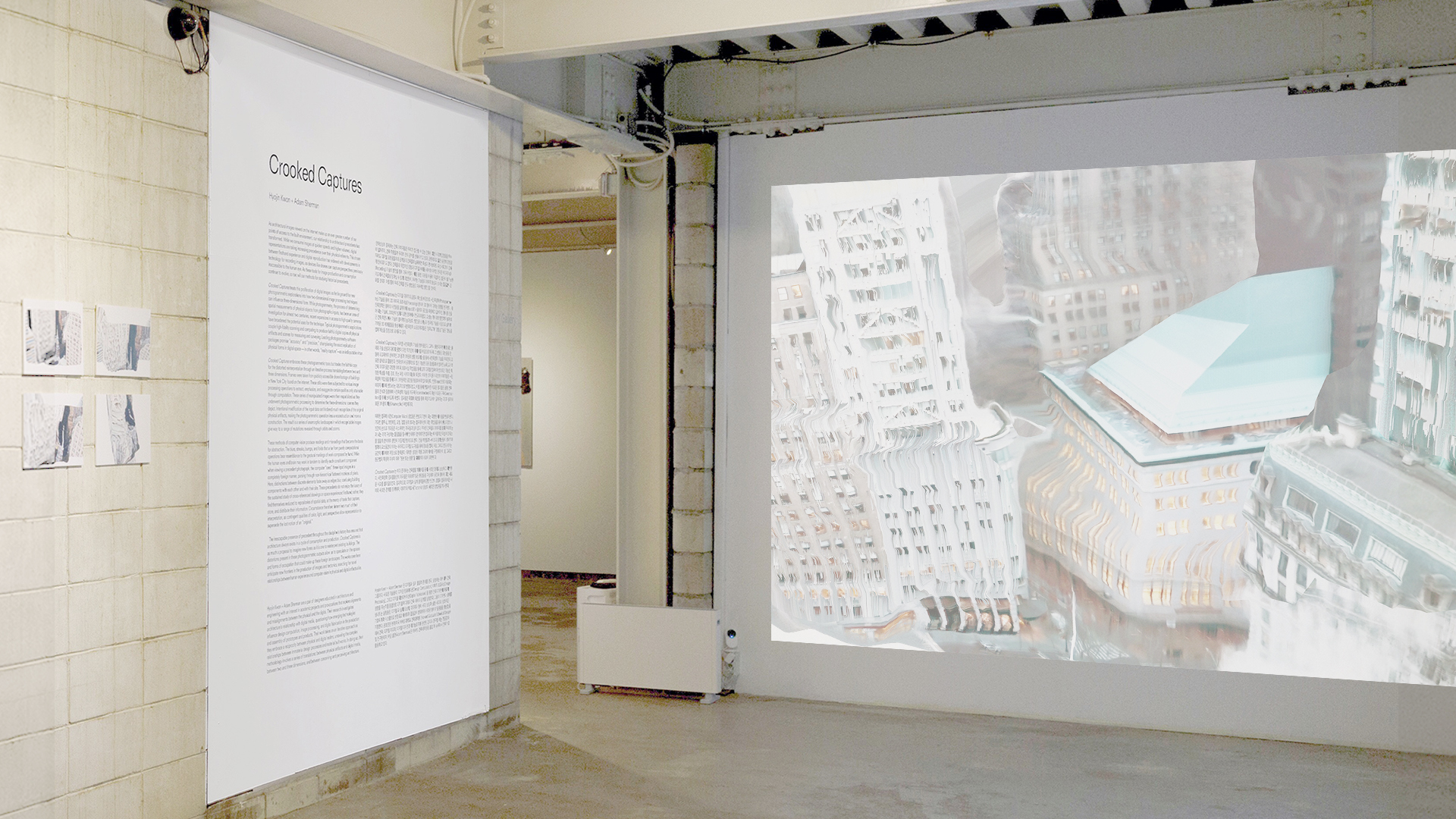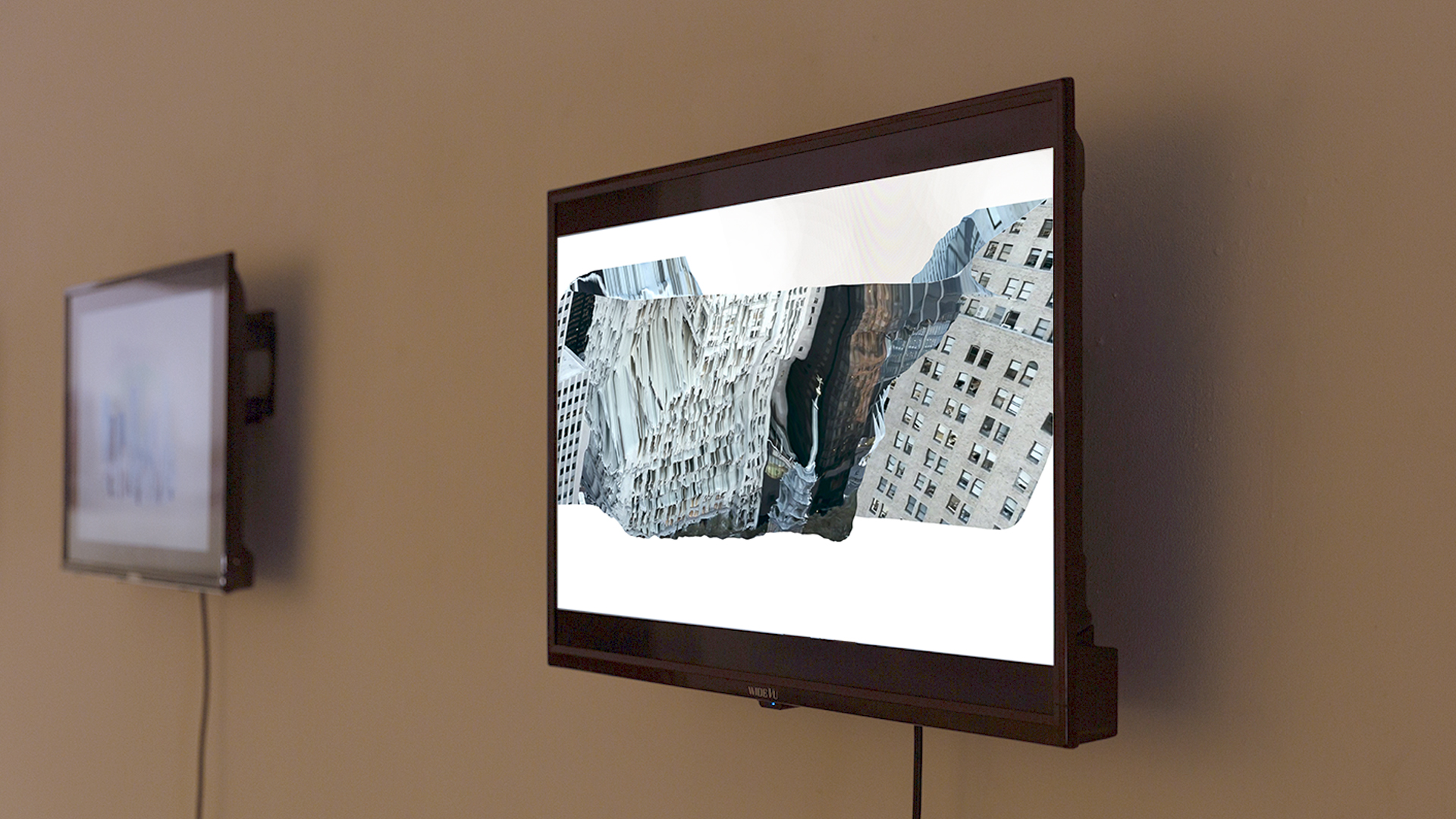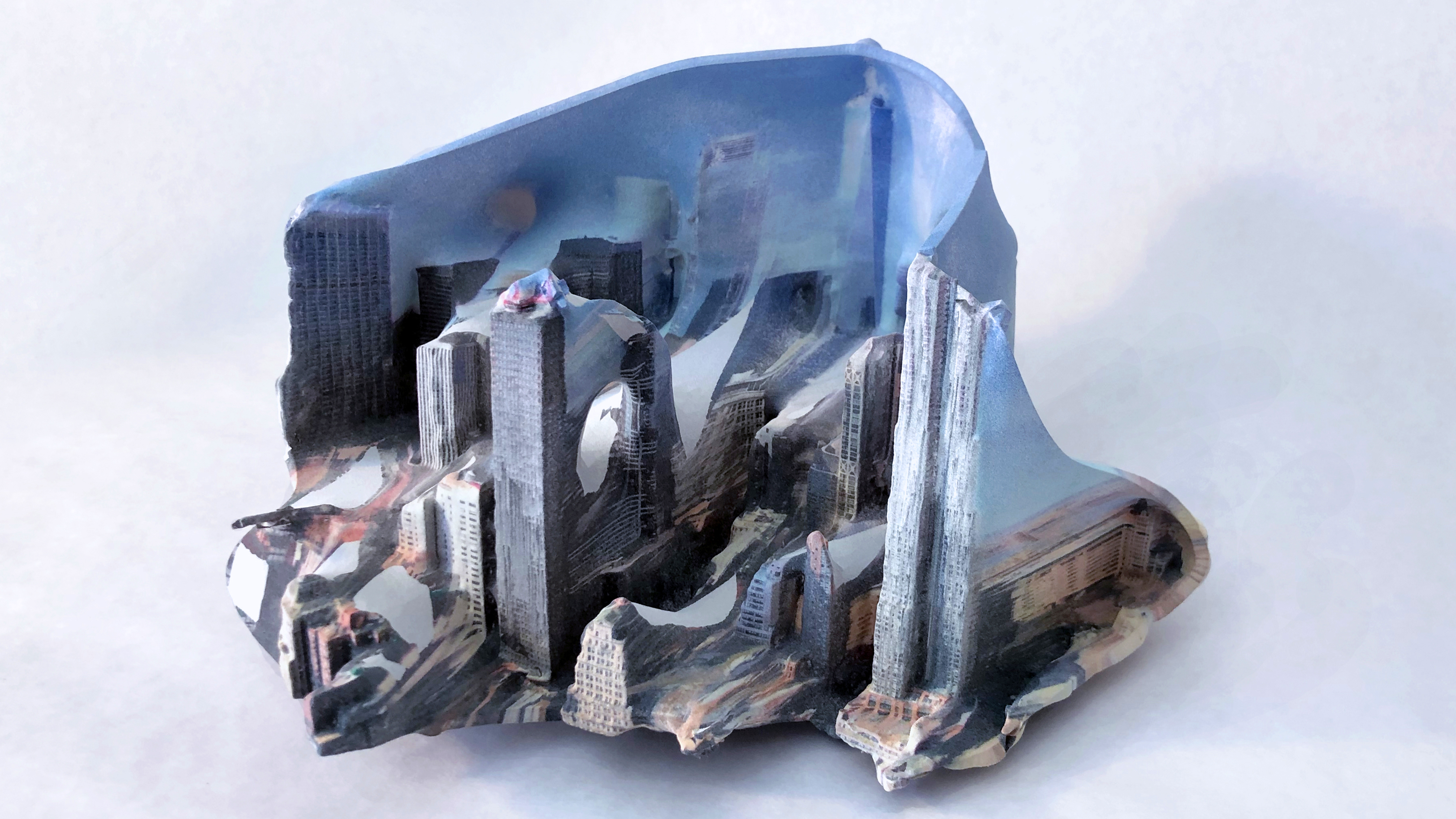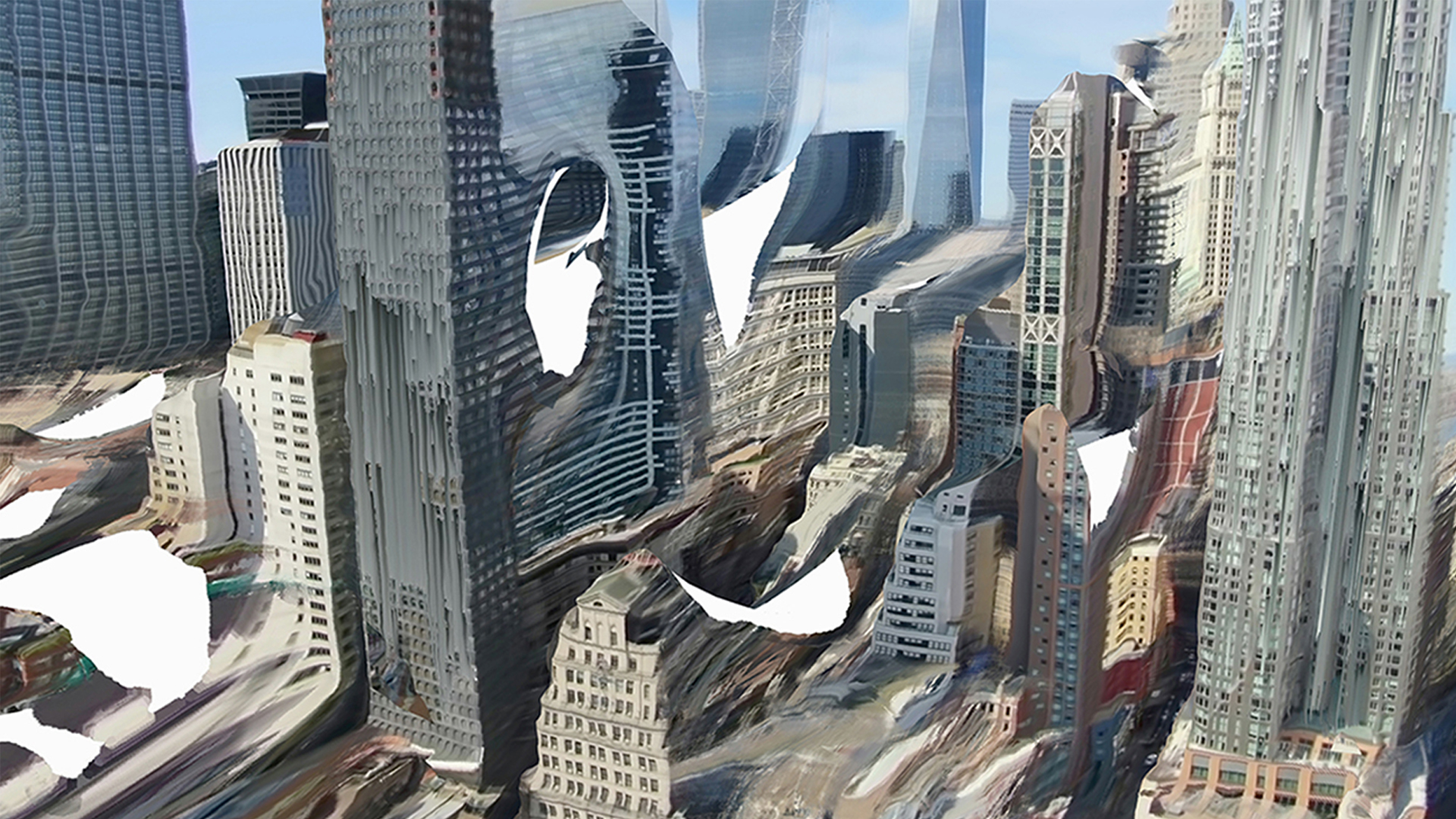Crooked Captures
Date: January 27 – 31, 2021
Team: Collaboration with Adam Sherman
Location: CICA Museum, Seoul, Korea
As architectural images viewed on the internet make up an ever greater number of our points of access to the built environment, our relationship to architectural precedents has transformed. While we consume images at quicker speeds and higher volumes, digital representations are taking increasing precedence over their physical referents. This chasm between firsthand experience and digital reproduction has widened with developments in technology for recording images, as devices like drones can capture perspectives previously inaccessible to the human eye. As these tools for image production and consumption continue to evolve, so too will our methods for studying historical precedents.
Crooked Captures treats this proliferation of digital images as fertile ground for new photogrammetric explorations into how two-dimensional image processing techniques can influence three-dimensional form. While photogrammetry, the process of determining spatial measurements of physical objects from photographic inputs, has been an area of investigation for almost two centuries, recent expansions in access to high quality cameras have broadened the potential uses for the technique. Typical photogrammetric applications couple high-fidelity scanning and computing to produce faithful digital copies of physical artifacts and scenes for measuring and surveying. Leading photogrammetry software packages promise “accuracy” and “precision,” championing the exact replication of physical forms in digital space—in other words, “reality capture”—as an indisputable virtue .
Crooked Captures embraces these photogrammetric tools but trades the faithful copy for the distorted reinterpretation through an iterative process translating between two and three dimensions. Frames were taken from publicly accessible drone footage of buildings in New York City found on the internet. These stills were then subjected to various image processing operations to extract, emphasize, and exaggerate certain qualities only attainable through computation. These series of manipulated images were then respatialized as they underwent photogrammetric processing to determine the three-dimensional scenes they depict. Intentional modification of the input data set hindered much recognition of the original physical artifacts, making the photogrammetric operation less a reconstruction and more a construction. The result is a series of anamorphic landscapes in which recognizable images give way to a range of mutations revealed through orbits and zooms.
These methods of computer vision produce readings and misreadings that become the basis for abstraction. The blurs, streaks, bumps, and folds that arise from purely computational operations bear resemblance to the gestural markings of work composed by hand. While the human eyes and brain may work in tandem to identify each constituent component when viewing a precedent photograph, the computer “sees” these input images in a completely foreign manner, parsing through non-hierarchical flattened matrices of pixels. Here, distinctions between discrete elements fade away as edges blur, confusing building components with each other and with their site. These precedents do not enjoy the luxury of the sustained study of cross-referenced drawings or space experienced firsthand; rather, they find themselves reduced to repositories of spatial data, at the mercy of tools that capture, store, and distribute their information. Circumstance therefore determines much of their interpretation, as contingent qualities of color, light, and perspective allow representation to supersede the lost notion of an “original.”
The inescapable presence of precedent throughout the discipline’s history has ensured that architecture always exists in a cycle of consumption and production. Crooked Captures is as much a proposal to imagine new forms as it is one to reinterpret existing buildings. The distortions present in these photogrammetric outputs allow us to speculate on the spaces and forms of occupation that could make up these foreign landscapes. The works seen here anticipate new frontiers in the production of images and tectonics, searching for novel relationships between human experience and computer vision in physical and digital artifacts alike.
American Telephone & Telegraph Buildin
Manipulated scenes and models constructed from found drone footage, Source: 1+ Hour Downtown NYC Drone by the Dronalist on YouTube
Manipulated scenes and models constructed from found drone footage, Source: 1+ Hour Downtown NYC Drone by the Dronalist on YouTube










120 Wall Street
Manipulated scene constructed from found drone footage, Source: Seaport District, Downtown NYC 4k Drone sunset by the Dronalist on YouTube
Manipulated scene constructed from found drone footage, Source: Seaport District, Downtown NYC 4k Drone sunset by the Dronalist on YouTube
130 William
Manipulated scene constructed from found drone footage, Source: New York City | 1 Hour Relaxation | 4K Aerial Drone Footage by Kalucci on YouTube
Manipulated scene constructed from found drone footage, Source: New York City | 1 Hour Relaxation | 4K Aerial Drone Footage by Kalucci on YouTube
230 Central Park South
Manipulated scene constructed from found drone footage, Source: Central Park Tower 6k Drone by the Dronalist on YouTube
Manipulated scene constructed from found drone footage, Source: Central Park Tower 6k Drone by the Dronalist on YouTube
461 Fifth Avenue
Manipulated scene constructed from found drone footage, Source: Midtown Manhattan 4k by the Dronalist on YouTube
Manipulated scene constructed from found drone footage, Source: Midtown Manhattan 4k by the Dronalist on YouTube